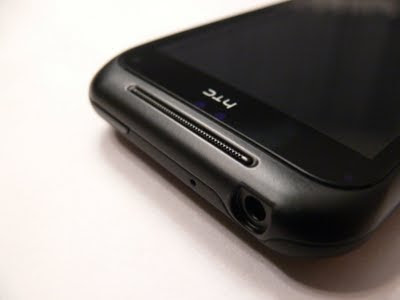 Introduction
IntroductionI have been a little busy lately, testing a new MT6573 based smartphone... and this time the review will focus on the G14, a clone of HTC Sensation.
Specifications
Chipset
Name: MediaTek MT6573 CPU: 650 MHz ARM11™ GPU: PowerVR™ SGX 531 Instruction set: ARMv6 Software environment
Embedded:OS: Android 2.3.4 (Gingerbread) Body
Dimensions
(width x height x depth):126 x 65.4 x 11.3 millimetres Weigth: 148 grams Color: Black Battery
Capacity: 1500 mAh Memory
RAM:capacity: 512 MB ROM-capacity: 512 MB Expansion slot: microSD memory card, supporting up to 32 GB Network support
Primary phone: GSM850, GSM900, GSM1800, GSM1900, UMTS900, UMTS2100 Secondary phone: GSM850, GSM900, GSM1800, GSM1900 Data links: GPRS, EDGE, HSDPA, HSUPA Display
Type: Sharp LCD capacitive touchscreen Size: 4.3 inches, WVGA resolution (480 x 800 pixels) Camera
Main (rear): 8 megapixels (interpolated) with autofocus and dual LED flash Secondary (front): 1.3 megapixels Interfaces
Bluetooth (802.15): Bluetooth 2.1 + Enhanced Data Rate Wireless LAN / Wi-Fi (802.11): IEEE 802.11b, IEEE 802.11g USB: USB 2.0 Client, Hi-Speed (480 Mbit/s)
USB Series Micro-B (Micro-USB) connectorSatellite navigation
Built-in GPS module: MT6620 chipset GPS antenna: Internal Complementary GPS services: A-GPS (Assisted GPS), MediaTek EPO (Extended Prediction Orbit) Additional features
Sensors: Analog Radio: FM radio (87.5-108 MHz) with RDS radio receiver
The micro-USB port is located on the left edge. I usually prefer to have it at the top or bottom so that I can use the phone -while in charge- without having the cable get in the way.
The four Android buttons on the bottom are visible at all times (even when the phone display is off). On some handsets they become invisible, to make the phone “look better” and to save on backlight power consumption.
On the back side, we find the 8 megapixels autofocus camera sat next to a dual LED flash and a single loudspeaker grille.
Getting the back of the phone off through the little catch at the bottom is much harder than it looks, with the fingers needed to prise it apart almost holding it in place at the same time - wiggling and shaking is needed to get to the battery and microSD card slot.
The two SIM slots can only be accessed after removing the battery, but the microSD slot is accessible even with battery in place.
Display quality
After my previous tests with the newest version of HD9, I thought that all MT6573 phones shared the same framework (which meant that in terms of features it was pretty much the same as when compared with G11i Pro features). I was happily surprised to see that G14 has a little bit different framework.
This new framework includes some nice CyanogenMod features, such as enhanced notification widgets.
There's a new entry on the normal settings menu, that provides access to extra settings.
This new framework includes some nice CyanogenMod features, such as enhanced notification widgets.
Under the dual SIM management menu, the user can edit the name of each SIM and also set the associated background color that will appear in call log as well as in the notification bar (behind the network strength bars). Other than that, also in the same menu, the user has the possibility to set a default card to establish all outgoing calls or set it to always ask, thus enabling the pop up that can be seen some images above showing the dialer (with the options of which SIM card should initiate the call). The same thing can be set for messaging and data connection purposes. In addition, given that G14 supports 3G networks, the option of video calls can also be noticed.
The extra settings menu includes advanced options related with application, display, input, interface and ringtones. Within extra display settings, screen-off and screen-off animations can be configured. Amazing animations, in my opinion, which imitate the CRT screen effect.
During the past few weeks, I noticed that battery performance is pretty good, taking into consideration the large screen size. With moderate use, I can get the battery to last 2 to 3 days, before putting it into charge.
Final thoughts
This is a good phone for people looking for an alternative to HD9. In terms of stability, speed, call quality, it is not different than the other MT65x3 clones, which means that MediaTek really did a great job.
Highs:
- Based on Android 2.3 (Gingerbread)
- Beautiful and renewed Dual SIM user interface
- Good battery life
- Dual SIM with 3G support
Lows:
- Display colours are not too vivid














































































































